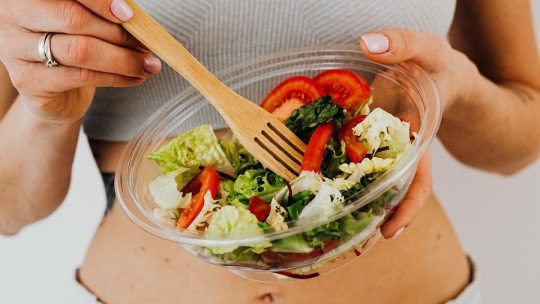There are different types of diets, and most people associate them with the weight loss process. But not all have that function, nor are all diets healthy. One of the diets that aims to improve our well-being and our stomach health is the astringent diet designed to reduce the symptoms of diarrhea.
The astringent diet is recommended in cases where a person suffers from diarrhea, regardless of its origin: transient, due to enteritis, Crohn’s disease or secondary to intestinal surgery. In this article we are going to talk about this diet and we are going to delve into its characteristics.
What is the astringent diet
The astringent diet is a diet that aims to take care of the digestive system when someone suffers from stomach upset or diarrhea.
Basically, with this diet, The subject includes in his diet some foods that are easily digestible and with which the body does not need excessive energy to process them, in addition to foods with a high content of minerals and vitamins, which do not contain much fiber and which help to retain fluid.
In this way, the balance between the nutrients ingested and the energy expended in managing what has caused the disease is restored, while digestive problems are not generated due to the delicate state in which the intestinal flora is found. This is a type of provisional diet, normally used in relatively small time windows.
On the other hand, the astringent diet is useful for any age, even children and the elderly.
What causes diarrhea
All of us, at some point in our lives, have suffered from diarrhea, that is, when we have a greater need to go to the bathroom to defecate, often without being able to control the deposition of excrements, which have little consistency (they are not very solid). Diarrhea can last from one day to two or three weeks in the case of acute diarrhea, and up to several weeks in the case of chronic diarrhea.
This condition, which is usually a symptom rather than a disease, has different causes. They are the following:
Some medical conditions that do not include infection are:
Recommendations for the astringent diet
Some recommendations to follow this diet are:
Phases of the diet against diarrhea
When someone consumes this diet, the stools become progressively harder and, therefore, the diet must be adapted to the degree of improvement. That’s why, This diet is made up of four phases
1. Phase zero
This is the initial phase, in which solid foods are not consumed In the case of children, it lasts approximately 4 hours, in the case of adults, the first 12 hours. In this phase, a great loss of minerals and fluids occurs, so it is essential to consume special drinks or drinks with salts (for example, a sachet of dissolved low sodium serum or medications to recover minerals).
It is also possible to boil a liter of boiled water, add the juice of 2-3 lemons, half a tablespoon of baking soda, half a teaspoon of salt and 2-3 tablespoons of sugar. Likewise, tea, chamomile, rice water, carrot water are ideal.
2. Phase two
After the previous phase, It is possible to incorporate other foods, such as boiled rice, potatoes and boiled carrots boiled pasta without boiled fish, boiled chicken, baked apple, etc.
3. Phase three
In the third phase of the astringent diet, foods that promote recovery are: pureed vegetables (zucchini, carrots, beans, pumpkin), fruit juices, boiled vegetables and legumes, rice, boiled chicken or fish, toasted white bread.
4. Phase four
The fourth phase consists of gradually introduce complex foods until consuming a normal diet For example, banana, boiled vegetables, grilled meat or fish, 0% fat yogurt, decaffeinated coffee, fat-free fresh cheese, etc.
What foods should be avoided
There are a series of foods that should not be consumed as part of this diet, at least during the first phases Progressively, it is possible to introduce some foods into the diet, once the improvement is evident. Foods rich in fat are not at all positive for this type of diet, as are foods rich in fiber.
Neither are industrial sweeteners found in soft drinks or highly digestible vegetables such as garlic, raw onion or peppers. Chocolate, alcohol, fried foods, red meat, butter should not be eaten. Dairy products should not be consumed either, at least until the fourth phase and always in their fat-free versions.
When we should not do this diet
The astringent diet is not a diet that can be harmful; However, when there is no need to do it (because there are no stomach problems or diarrhea) it will not be useful.
However, When a person has constipation, it is not advisable to follow an astringent diet since it would enhance this condition and, therefore, constipation increases.
Furthermore, we must keep in mind that over time our physiology changes, and therefore it cannot be assumed that just because this type of diet worked well for us years ago, it will always do so.
Bibliographic references:









